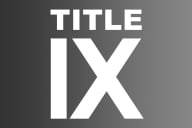You have /5 articles left.
Sign up for a free account or log in.
The latest round of COVID-19 federal stimulus funding is living up to the term “relief” for some college students, now that those resources are available for the first time to reduce student debt. Many institutions have since used some of the funds to reduce or relieve current students of outstanding financial obligations to the college or university. They include more than 20 historically Black colleges and universities, Trinity Washington University, and the City University of New York -- and the list has been growing every week.
This form of debt relief has its critics, to be sure. Some people believe it benefits the institutions just as much as the students for whom the funds are intended. But the fact is that outstanding balances can prevent students from re-enrolling where they owe the money or from transferring course credits to other institutions where they want to continue their education. So while in essence these institutions are paying themselves on behalf of their students with such federal relief dollars, students significantly benefit: with their debt burden reduced, many more will be able to continue their education rather than be forced to drop out due to financial challenges.
Another, more valid, critique is that erasing some debt of current students doesn’t address the larger issue of the outstanding federal and private debt that student borrowers have accumulated over the past several decades. Both the use of COVID-19 stimulus funding to pay back outstanding student balances and federal debt relief proposals suffer from the same major flaw: they are one-time options that do not address the underlying and continuing problems that students face. If the fundamental and long-standing challenges of higher education affordability are not addressed, students will only continue to accrue more debt.
Yet while these issues are being debated at the national level, colleges and universities are already in a position to address some of the institutional debt challenges. Currently, most institutions will withhold transcripts from students with outstanding institutional balances as an incentive to get them to pay, resulting in what has become known as “stranded credits.” Stranded credits keep many students from re-enrolling in the institution to which they owe money, as well as from transferring to another institution, since they can’t get access to their transcripts. The recent use of COVID-19 relief funds to clear some currently enrolled students’ institutional balances helps that group of students but not the large numbers of others who have dropped out or not been able to access their transcripts and transfer credits so as to complete their degrees. And it doesn’t solve the problem for students in the future continuing their education when the COVID-19 relief funds run out.
An alternative or complement to paying off institutional balances with one-time COVID-19 funds would be to create a clearinghouse that could benefit both students and institutions. Now, when student debts are not paid back, institutions write them off their financial statements. Yet even after the institution has written off the debt, students can’t access their transcripts. A clearinghouse could offer a win-win alternative to the current situation. In exchange for institutions writing off some portion of the institutional debt, students would commit to paying at least some amount. They could then get their stranded credits back for use at their original institution or a new one. Re-enrollments would go up, increasing institutional revenues, and credits that had once been inaccessible could now help students progress toward graduation.
Institutions may worry that such a process will decrease students’ incentive to pay their bills. But there are ways to minimize this problem. For instance, colleges could write down a larger portion of balances that have been outstanding longer. That would be a better option than just prohibiting the withholding of transcripts if students have outstanding balances, due to the possible unintended consequences of such a prohibition. For example, colleges might prevent students with outstanding balances from taking the final exam and completing courses as an alternative means of encouraging payment. Those credits would be lost forever, even though students would have completed most of the work for the course.
While not a long-term solution to the problem of stranded credits, the use of COVID-19 relief dollars to pay off outstanding balances affords us a natural experiment. We can examine the impact of institutional debt and withholding transcripts on educational attainment. For example, we could compare the persistence of students at institutions such as CUNY that have used the COVID-19 relief dollars with students’ past experiences there, or compare what is happening with today’s CUNY students with students at a peer university that has not addressed the institutional debt issue. Doing so would shed significant light on the influence stranded credits have had, and will have, on the success of past, current and future students.
It is in our nation’s interest to tackle the issues of access, affordability and success for college and university students. We know that higher education benefits our nation’s citizens, communities and economy. Diminishing student debt while also increasing affordability going forward would make us all better off.







